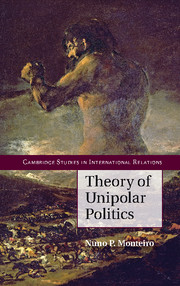Book contents
- Frontmatter
- Dedication
- Epigraph
- Contents
- Acknowledgments
- 1 Introduction
- 2 Conceptualizing Unipolarity
- 3 The Scope of Unipolar Strategic Choice
- 4 The Sources of Competition under Unipolarity
- 5 Competition in the Post–Cold War Era
- 6 The Sources of Conflict under Unipolarity
- 7 Conflict in the Post–Cold War Era
- 8 Conclusion
- Bibliography
- Index
4 - The Sources of Competition under Unipolarity
Published online by Cambridge University Press: 05 June 2014
- Frontmatter
- Dedication
- Epigraph
- Contents
- Acknowledgments
- 1 Introduction
- 2 Conceptualizing Unipolarity
- 3 The Scope of Unipolar Strategic Choice
- 4 The Sources of Competition under Unipolarity
- 5 Competition in the Post–Cold War Era
- 6 The Sources of Conflict under Unipolarity
- 7 Conflict in the Post–Cold War Era
- 8 Conclusion
- Bibliography
- Index
Summary
Ever since the bipolar Cold War ended and a unipolar world replaced it, much has been written on whether this new U.S.-led order can last. Among IR theorists, a lively debate has emerged on the question of unipolar durability. Estimates for the date at which a systemic balance of power would be reestablished have varied widely, from Christopher Layne's early prediction that by 2010 other states would have caught up with the United States, to Wohlforth's view that U.S. power would remain unchallenged at least until 2030.
Scholarship on the question of whether unipolarity will last generally gravitates around two main positions: declinism and primacism. Whereas declinists assert that unipolarity is bound to end relatively soon, primacists reaffirm the long-term durability of a unipolar system. At the core of this dispute lies a deeper theoretical disagreement between balance-of-power realists, who believe in the stabilizing effects of power parity, and hegemonic realists, who claim that, much to the contrary, power preponderance is the “natural” state of the international system. For almost two-and-a-half decades, this debate has remained unresolved.
- Type
- Chapter
- Information
- Theory of Unipolar Politics , pp. 78 - 112Publisher: Cambridge University PressPrint publication year: 2014
- 1
- Cited by



